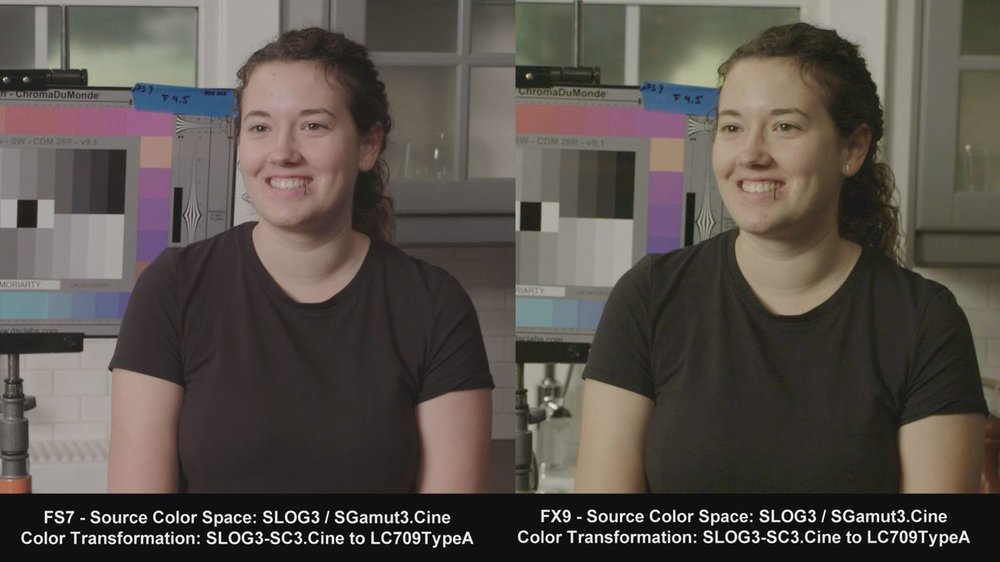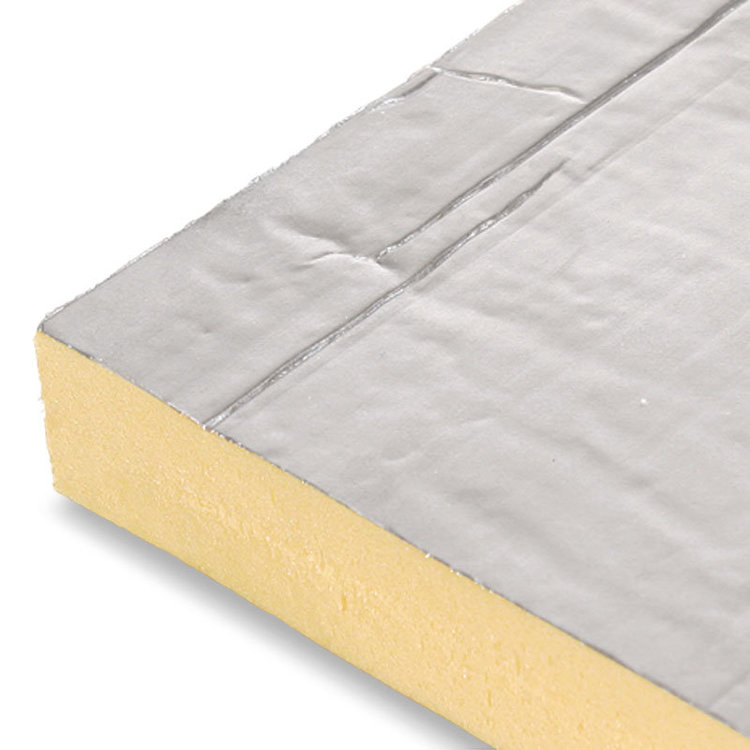-
Posts
282 -
Joined
-
Last visited
Everything posted by Stephen Sanchez
-
Miscalculating would be mine. Entering a setup with under-powered lights or inappropriate overhead diffusion. This relates to exterior shots and competing with 10000000 foot candles of daylight. I would feel less stressed having an 18k with four doubles outside a window and a crew that hates me than a light that was so weak, it had little to no effect. I love light. So this would be my top horror. It chews up time to fix, and compromises the mage.
-
-
Oh... right. I see what you're saying. The FX9 LUT in camera is different from all other Sony cameras and hasn't been publicly released yet, therefore post must make their own or adjust an existing one. In retrospect, what you originally said makes sense, I was just too dense to get it lol. I'll send this along to the editors.
-
Apologies, I assumed you were referring to Slog. I'm so used to setting and leaving my record settings. The editors always want Slog3 in SGamut3. Oh yes, the Slog3 footage does come out green for us. Again it's easily tuned out in post. And we use LUTs on camera only for monitoring, so that can't be the reason. Attached is a comparison the week we got the FX9, done by fellow DP Christian Moriarty. Both cameras were set side by side each with a Sony 28-135 G kit lens under tungsten lighting. The LUT in these pictures was applied in post from the Slog3 footage.
-
I frequently have to disconnect the cable to reroute the monitor for cable relief. Like everything Sony, it is proprietary. I keep a 7" 1080 monitor ontop on an 11" arm. I'll adjust the FS7 or FX9 monitor for an at-a-glance view of the technical display info and position the 7" monitor via SDI for actual operation. I'm curious Robyn, what better color science do you note from the FS7? I've found that the FX9 favors a color shift into green. After confirming black balance on vectorscope, it still shows a green cast in the edit. (Of course it can be timed out to mix with FS7 footage.) Unless I have been using a lemon. I have been using unit "002"
-

Lens Filter Strengths vs Focal Length
Stephen Sanchez replied to Stephen Sanchez's topic in Lenses & Lens Accessories
Is there any reason not to stack diffusion filters? Say, a 1/4 and 1/2 to make a 3/4? -

Lens Filter Strengths vs Focal Length
Stephen Sanchez replied to Stephen Sanchez's topic in Lenses & Lens Accessories
Oh interesting! Well that is a funny bit of conflicting logic. I suspected that was a personal taste anecdote. Thank you David for clearing up my confusion. -
Creative filters like Mists, Coral, and the like are never needed for the clean Direct Response work that I do. I witnessed a DP lighting for beauty using Promist and told he me that the strengths of diffusion filters like Promist or Low-Cons are intended to be stepped up as you choose a longer focal length to maintain consistency. So for instance, a 35mm with 1/4 Ultracon, switch to 85mm with 1/2 Ultracon and so forth. It makes sense if the tighter focal length is seeing a smaller area of the filter and thus requires more density to deliver the same effect. But I have no need to rent a set of promist to test this. Is that really true? And do you simply double the filter strength with the lens? Even more so, what about a typical set of 18, 25, 35, 50, 75, 100... how do you choose which filter strength goes to which focal length? I mean I don't think there are enough in-between Promists steps. One strength would have to double for two lenses, which would then be inconsistent. How does that work? I own a Tiffen Low-Con #1 and #4 that I got long ago when I was learning because I liked the look of The Terminator's first act so well. What focal length would you imagine those go best with?
-
Newer technologies allows for mat lights with curtains to be stuck to ceilings which saves space. Or a ceiling bounce with cutters. But if you're on a budget, lanterns are a great option. I use lantern-style space lights all the time in studios where there is no natural white ceiling for fill, or if I need to light from above. I use Mogul base 1000w tube-style lamps dropped into 30" paper lanterns then boxed in a 4x4 cube muslin lantern. The muslin lantern is built with clamps and c-47s and fabric from a sewing shop. Curtain it for spill control. This is a fairly soft box. If you wanted the hard bulb to act more, then remove the 30" lantern. I'll take a picture next time I build one. I've actually taken a 10'x10' muslin cut an create a HUGE pancake overhead.
-

Lighting a small space with a big mirror
Stephen Sanchez replied to Janhavi Asthana's topic in Lighting for Film & Video
@Janhavi Asthana Using a flexible highly reflective material will create a broken pattern, like what you're describing. No different than a shattered mirror. If you want to preserve the light's beam completely like through a mirror, then use a rigid reflective surface. So a solid mirror or HVAC tape over foamcore like Appo said. Now, if you want to simply reflect the light to distance the source and not necessarily preserve a perfect beam then it becomes more forgiving in materials and their imperfect surfaces. It's pretty simple: The more dull the reflective material, the more spread you will get. Bounce-card white is completely matte and therefore gives the most spread. My suggestions would be: 1) Home Depot insulation board. There is a matte silver style (wider spread, like 250), and a styrofoam silver style (narrower spread, like opal). Both are $12 a piece for a 4x8. The styrofoam has a white side that makes a great white bounce too. 2) Silver Lame. This is a soft silver (wide spread, like 250) reflector available for production frames. Matthews makes some. 3) Rigid Mirror. This is 100% beam preservation and zero diffusion effect. I've used a the mirror in bathroom to stretch an Astra's beam to reach a better inverse square falloff. -
I wouldnt use lights at all. To soften the harsh sun you can do a 12x12 to cover a 10-12ft area or do a 20x20 for more coverage. I use half grid for this. Then redirect the light from the side with a 12x12 reflector or bounce. This can be Ultra Bounce, griffolyn, or silver lame. I preffer the lame as it has more punch and carries over longer distance. The lame has to be adjusted every 30 min or so as the sun moves, so maybe not good for live events. Also with 20x20 you'll want 2 or 3 grips to handle it. If you're set on the 2.5kw, I'd try an overhead then shoot the 2.5kw through a 6x6 1/4 grid or a couple 250 frames side by side. But I'd still have an ultrabounce side with it. Hope this helps.
-
I'll preface by saying I don't do narrative works too often. I live mainly on direct response spots and product B-roll in Florida. So I am likely very ignorant to some common practices. I've noticed a few LA feature DPs carry around what they call a "reference camera." It's just a stills camera they have on set. But what does that even mean? Is a screengrab not enough? Is this just to archive every setup? Is it like bts shots? Or from camera pov? If it's from camera pov does it serve the same purpose as the "frame store" feature in the Zacuto gratical (i.e. is it just for comparison purposes)? Or is it just to look cool on set and get outsiders to ask questions? Thanks bunches!
-
Speaking to lighting, bounces can save space. Put a foamcore against the wall mounted with c stand or even taped, and shoot a beam into it from overhead or opposite side of talent (really anywhere you can put it). You could do a wall spreader to hang the light or softbox out of camera view. If budget permits, litemats are versatile and I've seen them taped to the ceiling with teasers to create a soft directional toppy source. As for lenses. That seems more informed by personal taste and if you can get what you want out of the location. So a scout with a zoom might be neccesary to see what lengths will or won't work.
-
"Cine" lenses exist to give shooters geared rings, long focus throws, manual non-click iris, and usually wider apertures. Your adjustments will definitely feel easier using them, but they aren't necessarily features you need. And since you're likely shooting miniatures, you'll want to close the iris down, so fast lenses don't matter. I don't know your setups but I would suggest wider focal lengths with as short a minimum focus as possible, or wide macro lenses if they exist. I own a sigma 18-35 and it's minimum focus is really close. But there must be others that get closer. I suggest wider lengths because it'll make the space feel less constricted. With that, still lenses will be cheaper. But you can get really good prices on older manual lenses if you have an adapter to your camera. For instance Canon FD lenses to an EF mount. If you want the ease of cine lenses, Rokinon makes terrific ones, but I am unsure of their minimum Focus range. Hope this helps.
-

Finding Gigs/ Gigs Finding you
Stephen Sanchez replied to Alejandro Ramos's topic in Jobs, Resumes, and Reels
To add to Adrian's list, there's also an app called Up Work. It has a ton of creative categories, from video production, to gfx, to scripting. -

On-set language (Camera Department)
Stephen Sanchez replied to Anzer Sizov's topic in Camera Operating & Gear
What's borring is when they expect you to know their terminology. I once had key grip tell me to grab a 750 stand. After a minute looking around for a preloaded 750w or 650w light on a stand he points me to a baby stand. Could have said "double riser" or "beefy baby" or I dunno... "light stand." I still don't understand where that came from. Out of silliness on set, and with a crew I know, I'll sometimes call a Full Apple a "flopple." Maybe it'll catch on. -

Green Screen Shoot in P-51 Mustang Cockpit
Stephen Sanchez replied to Grant Hobbs's topic in Visual Effects Cinematography
Possibly playing with some nets in front of the cockpit to simulate the ground's luminance during a dive? Maybe consider silking the sun and redirecting it with a reflector board? -

Believable Backgrounds / Ambient Lighting
Stephen Sanchez replied to Sawyer Thurston's topic in Lighting for Film & Video
You can add streaks against the wall, like through a window (or to fake a window). Or lamps if it feels appropriate. And if it's to dark, then you could raise the exposure with a bounce into the ceiling or off a wall for a side push. Alternatively you could rake a light across everything. So many options. Some folks have used a fresnel to highlight a certain area such as a painting. Hope that helps. -
Yes, we learn through experiencing and making adjustments. The work we do requires so much staging and actors and space with equipment that practicing or training can be impractical and instead learned live. Now you know. After a while it'll be inherent.
- 8 replies
-
- moody lighting
- dark food cinematography
-
(and 1 more)
Tagged with:
-

Liquor Store Robbery Lighting
Stephen Sanchez replied to Bobby Hewitt's topic in Lighting for Film & Video
When using guns in public spaces, call the sheriff's office in advance and tell them when and where you're going to be filming. And also have a "notice of filming sign" outside that might even include something like "fake guns on set." As for area lighting, scissor Clips are very useful in 360 situations like what you're describing. Beware of the weight of your fixtures, and safety chain them to something in the ceiling because the grid is not very strong. I'd pull some tiles out for easier access. Try to test the weight load before production. For the high-speed stuff, because it's macro, you can have your lights and fill cards close to your actor. So that should be super easy. Test the setup beforehand to be sure you'll have enough light for the effect you want. -
Well bounce light along with book light is about as glowy as you can get. That is, they have no beam. It just spreads. It's like sky light through a window. Diffusion allows the fuxture's beam to soften but still with a directional push. Think of a blurry oval stretching from the material. You see it as a hotspot in the diffusion. Even 216 doesn't 100% eliminate the beam. So diffusion will inherently have more throw in the middle, and thus more targeted. You can flatten that throw by putting an intermediate (a second diffusion) between the light and current diffusion, to an effect like a baffle in a softbox. And if you look at the diffusion you'll see is more evenly filled from corner to corner (No more hotspot).
-
Color looks great. And those highlights are much better tamed. A note. I assume with the same setup that once you added the filter you had to iris open to regain correct exposure. This wide aperture is a bit too much in my opinion. The DOF is so shallow at times that the part of the food is discernable. I would have set my iris to a range where more food was in focus and adjusted the shutter and ISO to compensate. Even lowering the fps on the slow motion to help it out.
- 8 replies
-
- moody lighting
- dark food cinematography
-
(and 1 more)
Tagged with:
-
Like Phil Rhodes said, people get used for their equipment. The kids with the Ursa, C200, or RED get the jobs, many who know nothing about lighting, but have a camera and easy rig. I've seen it. That's an expensive competition. I instead invested in some lights. Cheap used tungstens and some baby stands and did free gigs with my DSLR until I got enough for a reel. It went up from there. I now own my lights and a descent fluid head tripod. Cameras go obsolete after a few years. Support gear, lights and lenses really don't. If the BMPCC4K was available at the time, I would have bought that instead of my DSLR. But that's it.








